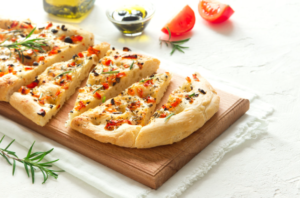What Is Pearl Millet Flour And Why Is It So Popular?
What To Know
- Pearl millet flour, an ancient grain with remarkable nutritional value, is gaining recognition as a versatile and nutritious alternative to wheat flour.
- Pearl millet flour is a nutritional powerhouse that offers a wide range of health benefits and culinary versatility.
- Whether you’re baking, cooking, or simply seeking a gluten-free alternative, pearl millet flour is an excellent choice that can elevate your health and culinary creations.
Pearl millet flour, an ancient grain with remarkable nutritional value, is gaining recognition as a versatile and nutritious alternative to wheat flour. Derived from the pearl millet grain, this flour is packed with essential nutrients, making it an ideal choice for health-conscious individuals and those with dietary restrictions.
Uncovering the Nutritional Riches of Pearl Millet Flour
Pearl millet flour stands out for its exceptional nutritional profile:
- Rich in Protein: Boasting a higher protein content than wheat flour, pearl millet flour supports muscle growth and repair.
- Excellent Source of Fiber: Its high fiber content promotes satiety, aids digestion, and regulates blood sugar levels.
- Abundant in Iron: Pearl millet flour is a rich source of iron, essential for red blood cell production and oxygen transport.
- Packed with Antioxidants: It contains antioxidants that combat free radicals, protecting the body against oxidative stress.
Benefits of Incorporating Pearl Millet Flour into Your Diet
Including pearl millet flour in your diet offers numerous health benefits:
- Improved Blood Sugar Control: Its low glycemic index helps regulate blood sugar levels, making it suitable for individuals with diabetes.
- Enhanced Digestion: The high fiber content promotes regular bowel movements and prevents constipation.
- Reduced Risk of Chronic Diseases: Antioxidants present in pearl millet flour protect against chronic diseases, including heart disease and cancer.
- Gluten-Free Alternative: Pearl millet flour is naturally gluten-free, making it an excellent option for individuals with gluten intolerance or celiac disease.
Culinary Versatility of Pearl Millet Flour
Pearl millet flour’s versatility extends beyond its nutritional value. It can be incorporated into a wide range of culinary creations:
- Baking: Pearl millet flour adds a unique nutty flavor to baked goods such as bread, muffins, and cookies.
- Flatbreads: It is a popular ingredient in traditional flatbreads like roti and tortillas.
- Porridges: Pearl millet flour is a staple in many cultures, used to prepare nutritious and filling porridges.
- Thickening Agent: Its starch content makes it an effective thickening agent for sauces, soups, and stews.
Pearl Millet Flour: A Sustainable Choice
In addition to its nutritional and culinary benefits, pearl millet flour is also an environmentally sustainable choice:
- Drought Resistance: Pearl millet thrives in arid conditions, making it a resilient crop in water-scarce regions.
- Low Carbon Footprint: Its cultivation and production have a lower carbon footprint compared to other grains.
- Erosion Control: The extensive root system of pearl millet helps prevent soil erosion and maintain soil fertility.
How to Use Pearl Millet Flour
Incorporating pearl millet flour into your diet is simple and convenient:
- Partial Substitution: Start by substituting 25-50% of wheat flour with pearl millet flour in your baking recipes.
- Gradual Increase: Gradually increase the proportion of pearl millet flour as you become accustomed to its taste and texture.
- Blending: For a smoother texture, blend pearl millet flour with other flours like wheat or almond flour.
- Soaking: Soaking pearl millet flour before use can enhance its nutritional value and reduce its bitterness.
Summary: Pearl Millet Flour – A Nutritionally Rich and Versatile Grain
Pearl millet flour is a nutritional powerhouse that offers a wide range of health benefits and culinary versatility. Its high protein, fiber, iron, and antioxidant content make it an ideal choice for health-conscious individuals and those with dietary restrictions. Whether you’re baking, cooking, or simply seeking a gluten-free alternative, pearl millet flour is an excellent choice that can elevate your health and culinary creations.
Answers to Your Most Common Questions
Q: Is pearl millet flour a good substitute for wheat flour?
A: Yes, pearl millet flour can be used as a partial or complete substitute for wheat flour. It adds a nutty flavor and provides a good source of fiber and protein.
Q: Can I use pearl millet flour to make gluten-free bread?
A: Yes, pearl millet flour is naturally gluten-free and can be used to make gluten-free bread. It’s important to combine it with other gluten-free flours for a balanced texture.
Q: How do I store pearl millet flour?
A: Store pearl millet flour in an airtight container in a cool, dry place. It can be kept for several months.
Q: Can I use pearl millet flour to thicken sauces?
A: Yes, pearl millet flour can be used as a thickening agent. Its starch content helps thicken sauces and soups.
Q: Is pearl millet flour a good source of iron?
A: Yes, pearl millet flour is an excellent source of iron, providing a significant amount per serving.
